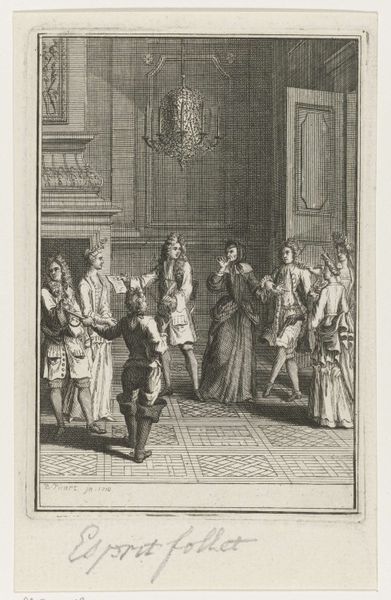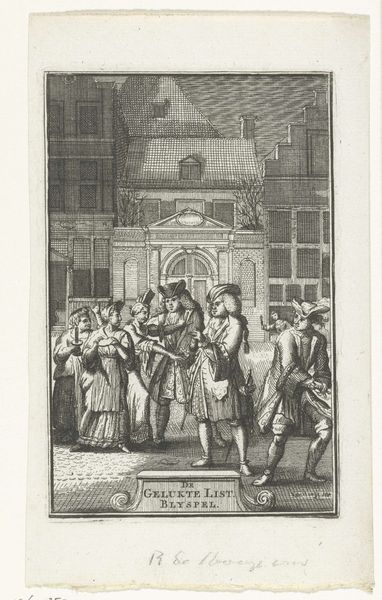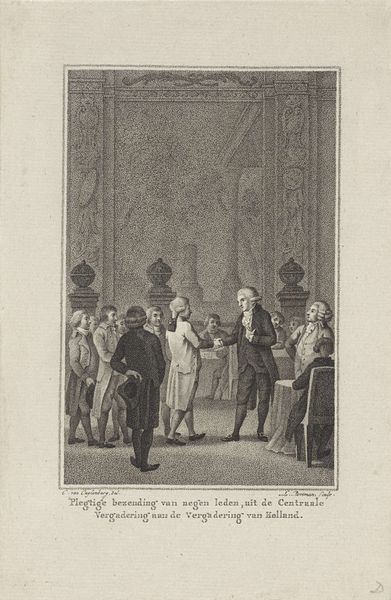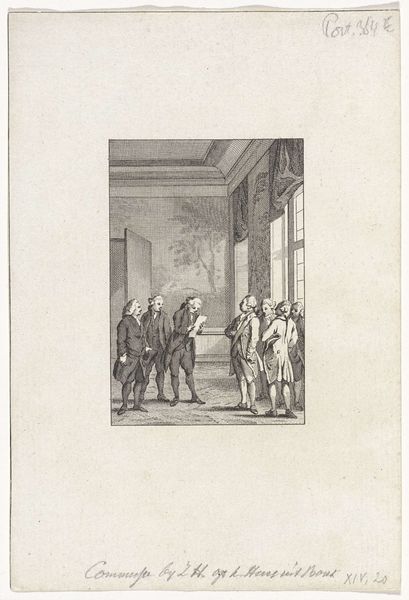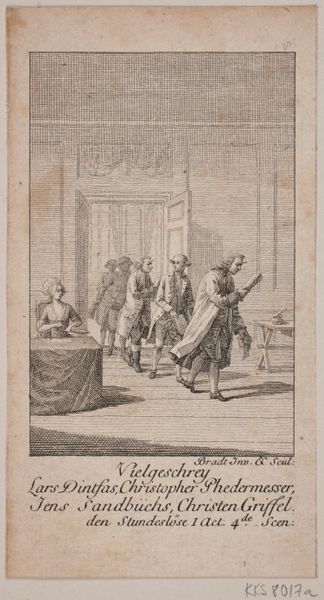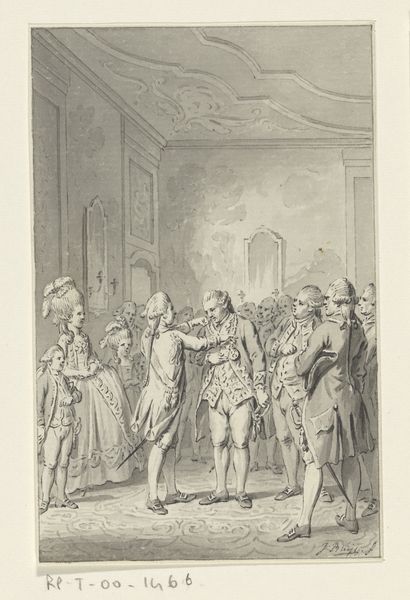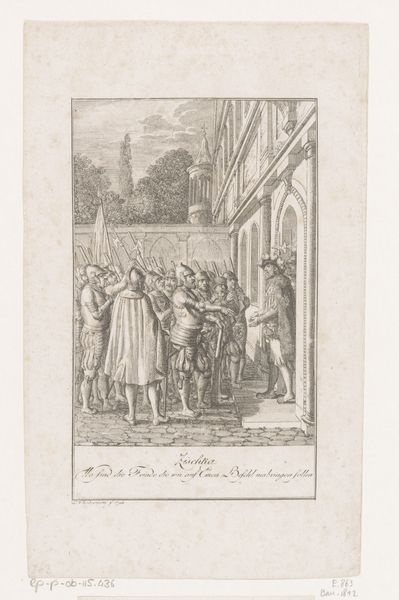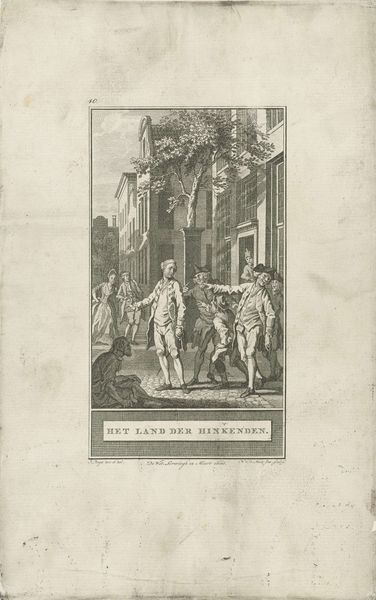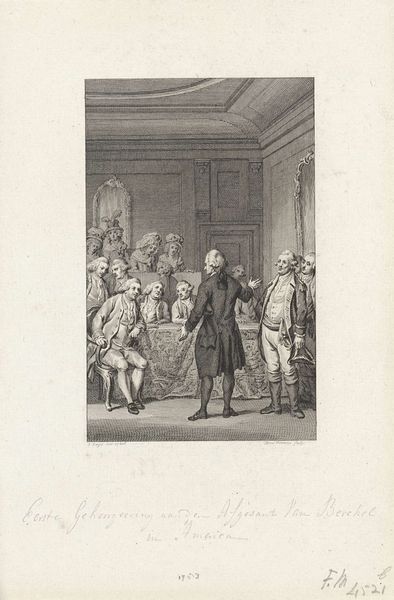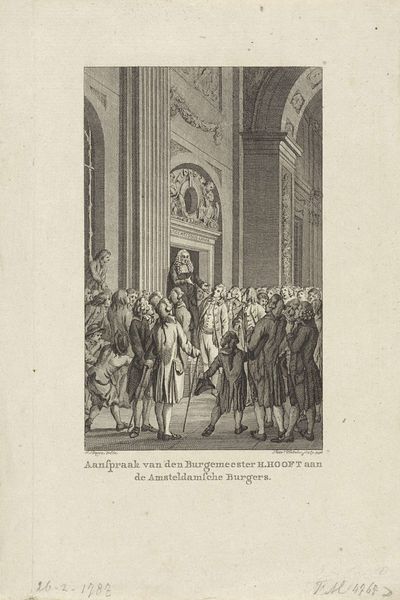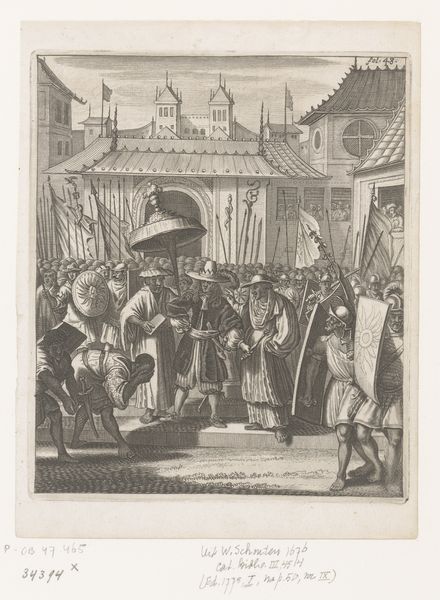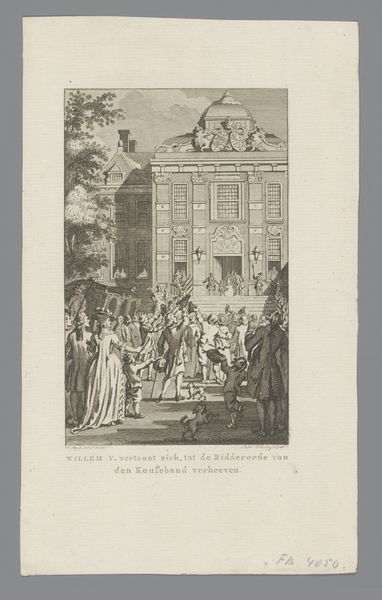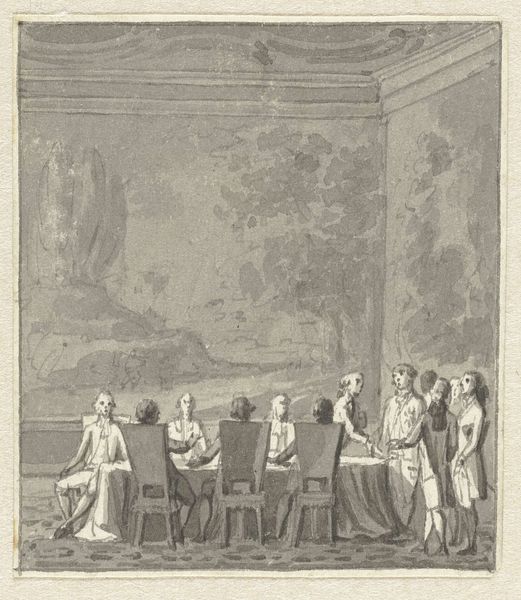
print, engraving
#
baroque
# print
#
figuration
#
cityscape
#
genre-painting
#
history-painting
#
engraving
Dimensions: height 129 mm, width 88 mm
Copyright: Rijks Museum: Open Domain
Curator: Looking at this print, “Ontvangst van een elegant gezelschap,” or "Reception of an Elegant Company," created in 1713 by Andries van Buysen after Bernard Picart, one immediately senses a performance, almost theatrical, unfolding before us. Editor: Yes, the entire scene feels staged, doesn't it? The figures are posed just so, and that arched doorway frames the scene almost like a proscenium. There's a deliberate arrangement, an almost unsettling air of constructed elegance. Curator: Exactly. Consider the social and political function of prints during the Baroque era. They served not just as art but as social commentary, as propaganda, and, importantly, as records of social conduct. Think of the rules around clothing, body language and interaction reflected in such engravings. Editor: Absolutely, these images shaped understandings of etiquette, class, and power. Looking closely, the meticulous details are amazing! Each expression seems so considered, the garments are richly rendered and one wonders, for what event would this specific set of social norms apply, or be performed? Curator: It also reveals hierarchies. Those standing back, perhaps serving staff or lower gentry, compared to those entering, heads held high. How do you read the outdoor setting versus indoor reception hall, with people processing from one to the next? Editor: Well, you feel the distance, the performative space. The architectural framework establishes rigid order. Then the gate acts as a checkpoint through which select people come in, immediately thrusting them into the theatre that we’ve discussed. In essence, this becomes an example of what Foucault theorized as visibility itself acting as a trap. Curator: I appreciate your Foucaultian perspective. Seeing the reception through such theoretical framing enables a vital critique. We can use these images not only as sources of knowledge, but also as vehicles for exploring modern theoretical lenses, and challenging those performances then and now. Editor: Indeed, turning the gaze back at ourselves. This image makes clear how vital context and intention were in previous centuries of social dynamics. It gives us a means to interrogate current ones through comparison and questioning.
Comments
No comments
Be the first to comment and join the conversation on the ultimate creative platform.
